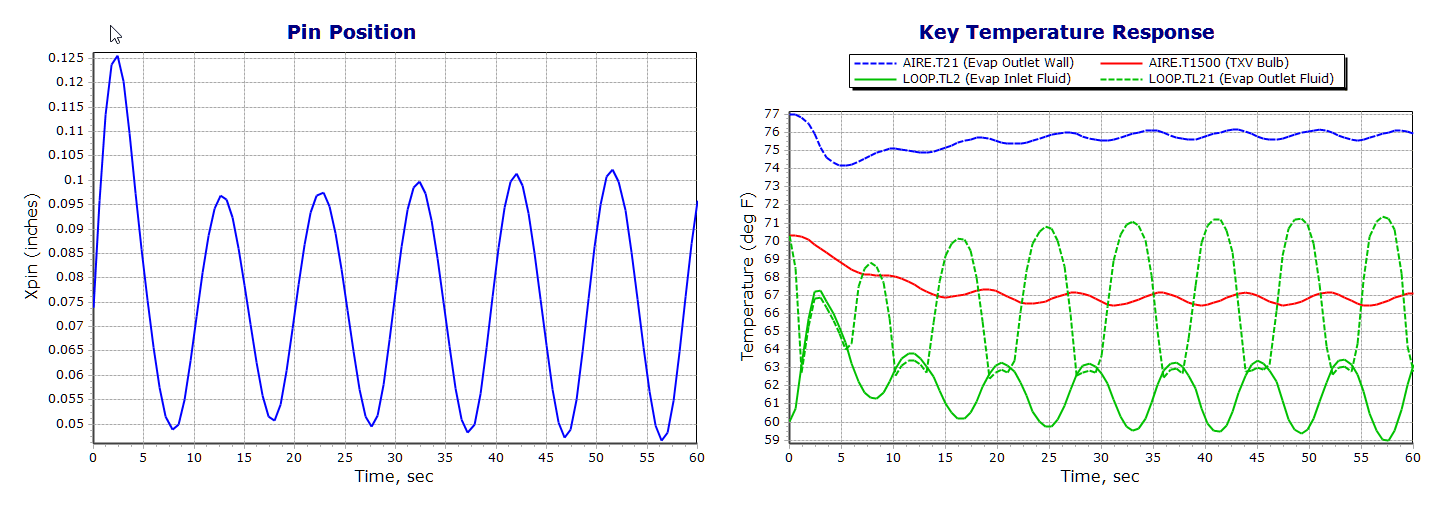THERMAL EXPANSION VALVE
Expansion Valve, Expansion Tube, (often abbreviated as TEV, TXV, or TX valve). Also called the orifice tube. This component often has a mesh screen and is found in the evaporator inlet pipe (liquid line). In some cases this item is found in the outlet of the condenser. Its purpose is to limit the flow of the high pressure liquid (R12 or R134a) and thereby meter the flow of refrigerant to the evaporator as a lower pressure liquid. The screen serves the purpose of trapping metal particles that break loose from the compressor or other components. Expansion Valve come in two types, Block and Right Angle. The block valve is located at the evaporator and its purpose is to constantly check the temperature of the (R12 or R134a) and allow the proper amount of (R12 or R134a) to enter the evaporator. The right angle valve comes in two types (internal equalized and external equalized). This valve is also found before the evaporator and its purpose is to control the amount of (R12 or R134a) going into the evaporator.
Commonly used on import and aftermarket systems. This type of valve can sense both temperature and pressure, and is very efficient at regulating refrigerant flow to the evaporator. Several variations of this valve are commonly found. Another example of a thermal expansion valve is Chrysler's “H block” type. This type of valve is usually located at the firewall, between the evaporator inlet and outlet tubes and the liquid and suction lines. These types of valves, although efficient, have some disadvantages over orifice tube systems. Like orifice tubes these valves can become clogged with debris, but also have small moving parts that may stick and malfunction due to corrosion.
Information on R12 and R134a Freon Refrigerants
Most cars in the past ran with only R12 refrigerant, but due to the new school of thought on protecting the ozone layer, most cars now run on R134a refrigerant. Some companies which make the refrigerant / freon will claim they have added value due to their refrigerant technology. Be weary of the claims and make sure it is certified as a type of refrigerant that is approved for your vehicle. Certain refrigerants will come with a leak detector as well. Twelve ounce canisters of freon and thirty pound cylinders are typically the amounts the refrigerant is sold by.
The UV dye is critical to help find R134a freon leaks. This technology has assisted many a/c technicians in saving time and locating problems quickly. The dyes typically show a bright, long-lasting color which are then detected by either old bulky UV lamps or the new small convenient pen type lights.
To make sure you are getting the right refrigerant, check that it contains a high-tech dye formulation that meets and exceeds the SAEJ2297 requirements. This also includes long-term chemical stability, compatibility with today's high-performance a/c system components, and the ability to maintain brightness and detect leaks for years to come.
It may be a one step application. The process starts by adding the refrigerant to the a/c system which does not contain dye. Get the compressor going and allow the dye to do its work. The lubricant and dye will mix and get dispersed throughout the system. Depending on the size of the leak, the time it takes to point it out will differ. Also, the type of system will make that time vary. After the UV dye is added and circulated, the color or fluorescence can be checked by getting rid of a minute amount of oil from one of the service ports. Finally, blue light lamps will pinpoint the issue or leak
Thermostatic Expansion Valve Response
Thermostatic expansion valves (TXV) are often used in vapor compression systems. These valves adjust to allow more or less flow to achieve complete vaporization with minimal superheat. TXVs “sense” the differential in temperature between the inlet and outlet of an evaporator. Unfortunately, there is a lag between the sensing of this temperature and its adjustment. SINDA/FLUINT can be used to analyze the dynamic stability of the TXV-controlled system: its ability to hold a set point after perturbations and to provide the necessary superheat.
For example, assume there is too much superheat, so the TXV begins to open. In addition to lags and finite time constants in the sensing mechanism and valve pin motion, the newly released fluid must traverse the length of the evaporator, quenching heated sections as it does. By the time cooler vapor reaches the outlet, the system may overshoot and “hunt” for a stable set point. This difficulty in arriving at a stable set point is therefore termed evaporator or TXV “hunting.” Many time constants and lags are involved, making detailed modeling necessary. Hunting is undesirable not only from an efficiency viewpoint, but also because it leads to increased wear and tear of the valve and compressor.
Key to this analysis is the ability to calculate the forces on the TXV valve pin. These forces include not only the pressure difference across the diaphragm, but also the spring force and the frictional force. Inertia of the pin is also important. The ordinary differential equation (ODE) solvers in SINDA/FLUINT allow a user define the “equation of motion” to be co-solved along with the thermo hydraulic model to define the pin location. Once the pin position is known, the corresponding resistance of the TXV can be interpolated from the provided table of mass flow rate versus delta pressure.
The charts below show the resulting valve pin position and key temperature responses of such and analysis.

